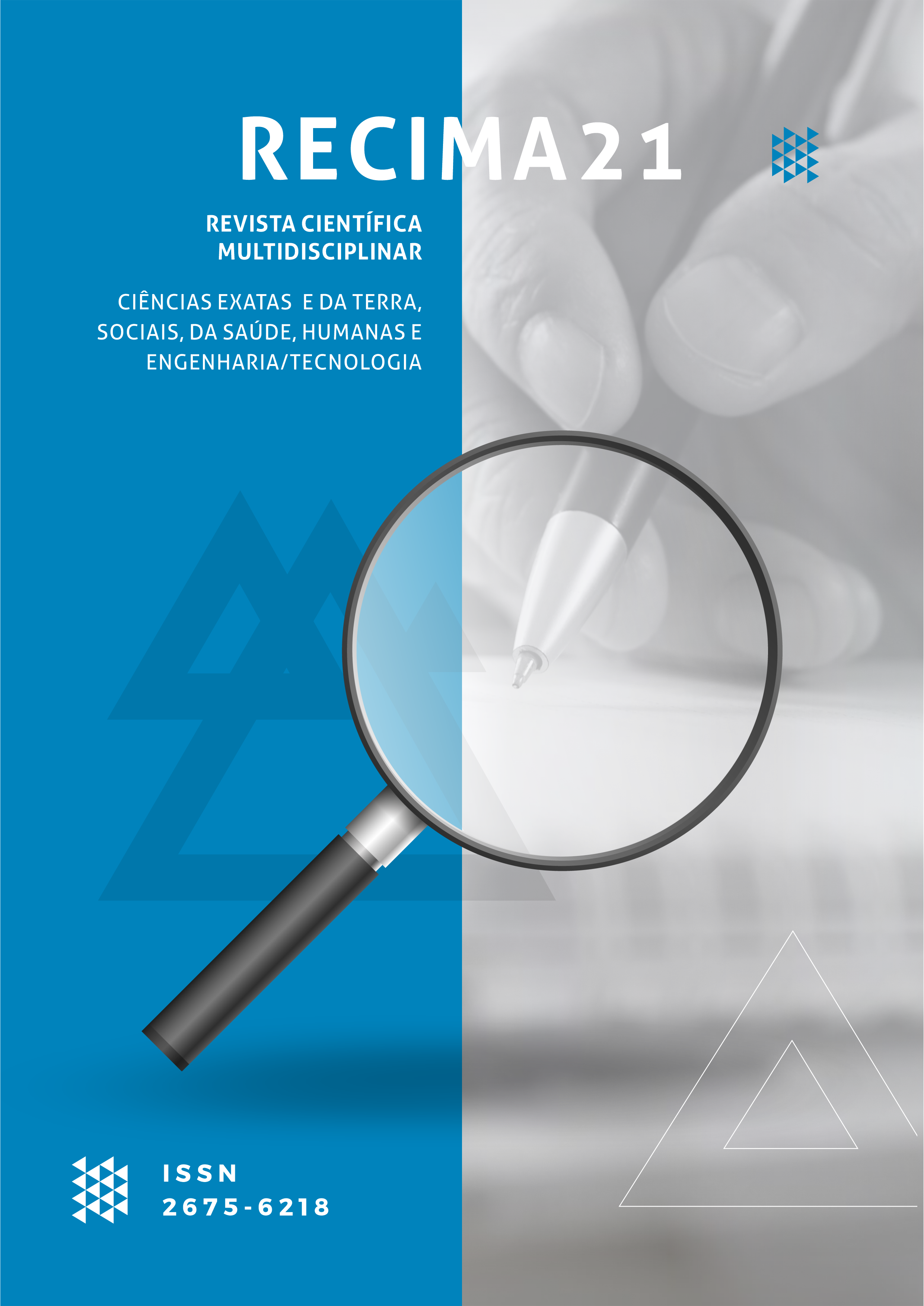O USO DO MULTIPLANO COMO MATERIAL MANIPULÁVEL NO ENSINO DA MATEMÁTICA PARA DEFICIENTES VISUAIS
DOI:
https://doi.org/10.47820/recima21.v3i4.1405Palavras-chave:
Multiplano, Inclusão, Deficiência Visual, Educação EspecialResumo
O presente artigo abordou uma proposta pedagógica com o uso do multiplano com o intuito de facilitar o ensino e aprendizagem da matemática para certos grupos de alunos que tem dificuldade em sua aprendizagem, especificamente aos deficientes visuais. Tendo em vista que não se deve, ou não se deveria excluir alunos deficientes, mas incentivar a sua inclusão, o multiplano é um material concreto, no qual alunos cegos e de baixa visão podem desenvolver o aprendizado de forma construtiva, tendo como foco o aprendizado da matemática, pois o principal objetivo não é simplesmente decorar fórmulas, mas sim de desenvolver e compreender um conhecimento amplo da matemática, tanto na sala de aula quanto em outras áreas de conhecimento. É de se destacar, que tal ferramenta, serve como instrumento a uma proposta inclusiva, uma vez que facilita o aprendizado do aluno com dificuldades ocasionadas pela deficiência aqui citada, ampliando assim a possibilidade de domínio de conteúdo. É sabido que este material proporciona o aprendizado de uma infinidade de atividades matemáticas nos mais diversos ramos: álgebra, geometria, estatística, física etc. Assim, o objetivo do trabalho foi fazer um levantamento bibliográfico de trabalhos que demonstram que o uso do multiplano no ensino da matemática para alunos deficientes visuais e como esse material concreto pode ajudar na assimilação dos conteúdos mais abstratos do ramo da matemática.
Downloads
Referências
ASSUNÇÃO, E. Problemas de Aprendizagem. 13. ed. São Paulo: Ática, 2010.
BRASIL. LDB: Lei de diretrizes e bases da educação nacional: Lei n° 9.394, de 20 de dezembro de 1996, que estabelece as diretrizes e bases da educação nacional. 13. ed. Brasília: [s.n.], 2016.
CAMARGO, Eder Pires De. Inclusão social, educação inclusiva e educação especial: enlaces e desenlaces. Ciência & Educação (Bauru), v. 23, n. 1, p. 1–6, 2017.
FERMINIO, Denis Correa. Educação Inclusiva: A inserção escolar como processo de inclusão e exclusão. 2017. 1–90 f. Universidade do Extremo Sul Cararinense - UNESC, 2017.
FERNANDES, Nidia ; e FERNANDES, Wagner Luiz. Software de inclusão do deficiente visual ao ambiente computacional. São Paulo: [s.n.], 2010.
FERRANATO, Caroline Ananias. Medição do impacto da matemática e o “case” do multiplano. 2015. 52 f. Universidade Federal do Paraná, 2015.
FERRATO, Rubens. A Construção de Instrumento de inclusão no Ensino da Matemática Dissertação de Mestrado. 2002.
FIORINI, Maria Luiza Salzani e DELIBERATO, Débora e MANZINI, Eduardo José. Estratégias de ensino para alunos deficientes visuais: A Proposta Curricular do Estado de São Paulo. Motriz. Revista de Educacao Fisica, v. 19, n. 1, p. 62–73, 2013.
FREIRE, Paulo. Pedagogia da Autonomia. 25. ed. São Paulo: Paz e Terra, 1996.
GIL, Marta. Deficiência Visual. Brasília: [s.n.], 2000. Disponível em: . Acesso em: 11 dez 2021
JUNIOR, Henrique Arnoldo. Estudo do Desenvolvimento do Pensamento Geométrico por alunos surdos por meio do multiplano no ensino fundamental. 2010. 292 f. Universidade Católica do Rio Grande do Sul, 2010.
MANTOAN, Maria Teresa Eglér. Inclusão escolar: O que é? Como fazer? Moderna ed. São Paulo: [s.n.], 2003.
NORDESTE, Diário Do. Multiplano: Invento facilita o estudo da matemática pelos cegos. 2002 Disponível em: <http://www.sac.org.br/instituto/DN00033.htm>. Acesso em: 15 dez 2021.
PRADO, Luciana da Silva. Sala de recursos para deficientes visuais: um itinerário, diversos olhares. 2006. 198 f. Universidade de São Paulo, 2006.
RODRIGUES, Priscila Acacio e MAGALH, Bezerra e PINHEIRO, Ivoneide. A UTILIZAÇÃO DO MULTIPLANO PARA A APRENDIZAGEM DE. n. 1, 2010.
ROGALSKI, S. M. Histórico do Surgimento da Educação Especial. Revista de Educação do IDEAU, v. 5, n. 12, p. 1–13, 2010.
SÁ, Elizabet Dias De e CAMPOS, Izilda Maria De e SILVA, Myriam Beatriz Campolina. Atendimento educacional especializado: Deficiência Visual. Brasília: Gráfica e Editora Cronos, 2007.
SILVA, Rawlison dos Santos. A utilização do multiplano no ensino da matemática na educação básica: uma proposta para a educação inclusiva. 2016. 64 f. Universidade Federal do Tocantins, 2016.
SOUSA., Joana Darc Oliveira de Souza e. Leitura de Formas com o Tato: Possibilidade de Aprendizagem Significativa para Alunos Cegos. VIII Encontro da Associação Brasileira de Pesquisadores em Educação Especial, p. 1354–1363, 2013.
STAINBACK, Susan; STAINBACK, William. Inclusão: um guia para educadores. Trad. de Magda França Lopes. Porto Alegre: Artmed, 1999.
VIVIAN, Clarice Fonseca. O multiplano como instrumento de aprendizagem: um estudo de caso sobre a pessoa com paralisia cerebral. 2018. 29 f. Universidade Federal do Pampa, 2018.
Downloads
Publicado
Edição
Seção
Categorias
Licença
Copyright (c) 2022 RECIMA21 - Revista Científica Multidisciplinar - ISSN 2675-6218

Este trabalho está licenciado sob uma licença Creative Commons Attribution 4.0 International License.
Os direitos autorais dos artigos/resenhas/TCCs publicados pertecem à revista RECIMA21, e seguem o padrão Creative Commons (CC BY 4.0), permitindo a cópia ou reprodução, desde que cite a fonte e respeite os direitos dos autores e contenham menção aos mesmos nos créditos. Toda e qualquer obra publicada na revista, seu conteúdo é de responsabilidade dos autores, cabendo a RECIMA21 apenas ser o veículo de divulgação, seguindo os padrões nacionais e internacionais de publicação.













